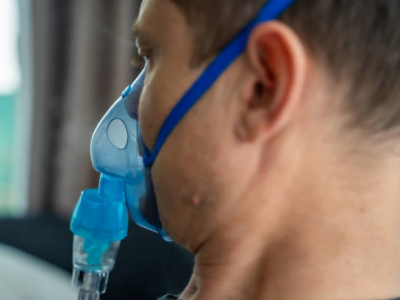Wisconsin probes outbreak of 44 bloodstream infections, some fatal
Wisconsin health officials are investigating an outbreak of 44 bloodstream infections in mostly older patients, with 18 deaths, caused by a bacterium called Elizabethkingia anophelis, the Wisconsin Department of Health Services (WDHS) announced yesterday.
"The Elizabethkingia infection has been detected in 44 patients located in southeastern and southern Wisconsin. The majority of patients are over the age of 65 years, and all have serious underlying health conditions," State Health Officer Karen McKeown, MSN, said in a WDHS press release. The source of the bacteria has not yet been determined and is under investigation.
The first six cases were identified between Dec 29, 2015, and Jan 4, prompting the WDPH to begin statewide surveillance Jan 5, the WDPH said. Information provided to healthcare workers and laboratories has led to "rapid identification of cases and appropriate treatment," the agency said.
The statement did not specify how many of the patients contracted the infection in healthcare settings.
In a background statement, the WDHS said the cases occurred between Nov 1, 2015, and Mar 2 and have involved residents of Columbia, Dane, Dodge, Fond du Lac, Jefferson, Milwaukee, Ozaukee, Racine, Sauk, Washington and Waukesha counties.
"Illness associated with Elizabethkingia typically affects people with compromised immune systems or serious underlying health conditions, and can lead to death," the DHS said. But it has not been determined if the 18 deaths in this outbreak were caused by the infection, the patients' other health conditions, or both, the agency added.
"Determining the source of the bacteria affecting patients in Wisconsin is a complex process," McKeown said in the WDHS release. "While we recognize there will be many questions we cannot yet answer, we feel it is important to share the limited information we have about the presence of the bacteria, as we continue our work to determine the source."
A team of epidemiologists and lab specialists from the US Centers for Disease Control and Prevention (CDC) is helping to hunt for the source of the pathogen, as are various state and local partners, the WDHS said.
Although Elizabethkingia species are multidrug-resistant, testing of at least six isolates from the outbreak showed that most were susceptible to trimethoprim/sulfamethoxazole, flouroquinolones, and piperacillin/tazobactam, the WDHS said in information for health professionals.
Mar 2 WDHS press release
WDHS backgrounder
Dutch team detects MCR-1 gene in supermarket chicken
An investigation of Enterobacteriaeae collections from retail chicken meat and hospitalized patients in the Netherlands since 2009 found the MCR-1 antibiotic-resistance gene in the chicken meat, but not from the human samples, according to a report published today in the latest issue of Eurosurveillance.
Chinese researchers first described the MCR-1 gene, which disables resistance to the last-line antibiotic colistin, in November. In the wake of that finding, scientists in several countries have found the gene after examining their sample collections, sometimes alongside other resistance genes.
In the new study, researchers looked at 2,417 Enterobacteriaceae samples collected from 2009 through 2015, including 196 isolates from retail chicken meat, and the rest from prevalence surveys in hospitalized patients, clinical cultures, and healthcare outbreaks. They found the MCR-1 gene in 3 (1.5%) extended-spectrum beta-lactamase–producing Escherichia coli isolates from retail chicken meat samples from 2009 and 2014. Two were from the same meat sample batch, hinting at a common source. No MCR-1 genes were found among the 2,275 human isolates.
Researchers concluded that the lack of findings in the human samples suggests MCR-1 type colistin resistance isn't currently a human health threat in the Netherlands, but it requires continual monitoring and a better understanding of its mechanisms in humans, livestock, and food.
Mar 3 Eurosurveill report
In a related editorial in the same issue, two Scandinavian experts said the new study adds to a long list of other reports of MCR-1 detections over the past 3 months, a rapid accumulation of evidence that shows the strength of whole-genome sequencing and publicly available sequence databases.
They warned that the presence of the gene in food and asymptomatic people, combined with increasing colistin use in European hospitals, may be a game changer. They added that early identification of index patients and proper control measures are needed to prevent the threat of hospital outbreaks in Europe that involve resistant strains that have little or no treatment options.
Mar 3 Eurosurveill editorial
Saudi officials confirm new MERS case in Buraydah
After going 2 days without confirming a case, Saudi Arabia today reported a new MERS-CoV infection, the first in March but the 10th in the past 8 days, according to the country's Ministry of Health (MOH).
The patient is a 40-year-old Saudi man in Buraydah who is hospitalized in critical condition. He is not a healthcare worker, the MOH said. His case is listed as primary, meaning that he likely did not contract MERS-CoV (Middle East respiratory syndrome coronavirus) from another infected person.
Buraydah is in the north-central part of the country, about 200 miles northwest of Riyadh.
On Mar 1 the MOH reported that a previously confirmed MERS patient died. He was a 24-year-old foreign man in Riyadh who was not a health worker. He had no preexisting disease. It appears his case was first confirmed by the MOH 2 weeks ago; at that time he was hospitalized in an intensive care unit.
The new case and death brings the Saudi total to 1,310 infections and 556 deaths, the MOH said today.
Mar 3 MOH update
Mar 1 MOH update
Study: Chikungunya cases, dengue co-infections likely underreported
Chikungunya cases and chikungunya-dengue co-infections are likely to be misdiagnosed as dengue in countries where both viruses ciruculate, according to a study today in BMC Infectious Diseases.
Researchers from the London School of Hygiene and Tropical Medicine conducted the first systematic literature review of global health alerts and 30 studies related to chikungunya-dengue co-infection.
Of the 98 countries in which both dengue and chikungunya were endemic, only 13 (Angola, Gabon, India, Madagascar, Malaysia, Myanmar, Nigeria, Saint Martin, Singapore, Sri Lanka, Tanzania, Thailand, and Yemen) had reported co-infections.
Of 30 studies that have documented dengue and chikungunya co-infections, only five identified the responsible vector. The investigators found that Aedes aegypti (endemic in 174 countries) and Aedes albopictus (endemic in 88 countries), both of which can carry dengue and chikungunya, are found together in 68 countries. Each species requires a different type of vector control and surveillance to limit disease spread, the study said.
The authors said dengue infection is often assumed in cases of fever, rash, and muscle and joint pain, while co-infection tends to be detected only during chikungunya outbreaks. Among the 30 studies, only one identification of co-infection resulted from an investigation of dengue alone.
Chikungunya has likely expanded rapidly in tropical and sub-tropical countries, though its probable misdiagnosis as dengue and underreporting of co-infections make it difficult to understand its impact, the authors said.
They recommend building a global database to track chikungunya cases and co-infections with dengue, developing better diagnostic tests, standardizing vector control and surveillance programs, and gaining greater understanding into the clinical outcomes of dengue and chikungunya co-infection.
Mar 3 BMC Infect Dis study
Sierra Leone notes 28 Ebola cases following 2014 funeral
At least 28 Ebola cases that occurred in fall 2014 in a rural district of Sierra Leone were linked to one funeral, according to findings published today in Morbidity and Mortality Weekly Report (MMWR).
The CDC, the Sierra Leone Ministry of Health and Sanitation, and district health officials investigated a substantial increase in Ebola cases that occurred in Sierra Leone's Moyamba district in September 2014. The retrospective case analysis reviewed suspected and confirmed Ebola cases in the district between Jul 11 and Oct 31, 2014, and found that 28 people with confirmed Ebola virus disease had attended one funeral during Sep 5 to 7, 2014.
Of the 28 Ebola patients who had attended the funeral, 21 (75%) had touched the decedent's corpse, and 16 (57%) had direct contact with the decedent before his death. Eight Ebola patients, all men who had contact with the corpse, died.
Investigation revealed that eight additional Ebola cases and one related death in Moyamba district probably resulted from contact with funeral attendees.
During the nearly 3 months of case analysis, investigators also identified other Ebola infections in Moyamba district that may have been related to unsafe funeral practices. Of the 109 people with confirmed Ebola during the period, 42 (39%) had attended a funeral, and 36 (33%) had carried or touched the decedent at the funeral in the month prior to becoming ill.
Health officials said that the Moyamba district cluster can likely be attributed to a high viral load in the decedent, direct contact between case-patients and the corpse, and the number of people exposed to the virus during a multi-day funeral. The CDC recommends that funerals and burials for Ebola victims be conducted by trained teams with access to protective equipment.
As of Feb 17, Sierra Leone had reported a total of 14,122 Ebola cases, 62% of which have been confirmed, and 3,955 related deaths since the outbreak began in 2014.
Mar 4 MMWR study













